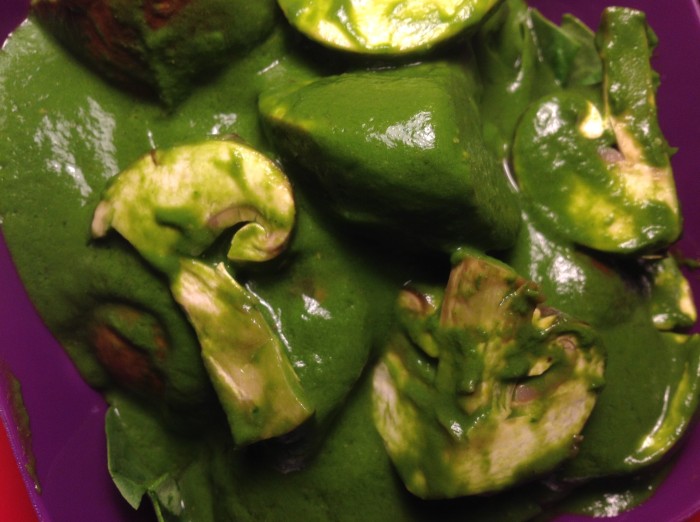Mushrooms are not part of the plant kingdom; they are fungi, which are much more like animals than plants in a lot of ways. They produce vitamin D from the sun (putting mushrooms in direct light, whether UVB or sunlight, will boost their vitamin D content!), inhale oxygen, and exhale carbon dioxide. Mushrooms are fat free, cholesterol free, high in antioxidants, boost immune defenses, and contain copious amounts of potassium. There have been recent studies that show people who consume more mushrooms have lower risk of certain cancers. The use of mushroom compounds and extracts for their healing and medicinal properties is called mycotherapy. In fact, ancient Romans adored edible fungi, and in ancient Egypt they were considered food for royalty, forbidden to commoners.
There are over 38,000 varieties of mushrooms, but not all are fit to be eaten. Amanita phalloides, or more commonly known as the Death Cap, is extremely poisonous and responsible for over 90% of mushroom related deaths around the world. Mushrooms may be delicious, but worth dying over? Maybe. Mycologist Paul Stamets has discovered countless ways mushrooms can be used as a resource and claims these little guys can save the world. He took part in an experiment in 1998 where an oil spill was simulated; there were four test piles of dirt imbued with diesel and petroleum waste, a contamination rate of 10,000 parts per million. After eight weeks of oyster mushroom growth in one of the dirt piles the soil had changed color, plants were flourishing, and the aromatic hydrocarbons in the soil were less than 220 parts per million. The other piles remained unchanged.
Stamets has also invented “Econol,” ethanol from cellulose…via fungus. He owns a company called Fungus Perfecti, and ships mushrooms worldwide. He created something called a “life box,” essentially a cardboard box filled with fungal spores, which can be planted with seeds in order to produce a beautiful tree or even foodstuffs. The mushrooms nurture plants around them by attaching to the root hairs and providing nutrients. A mushroom genius, he has also discovered how mushrooms can eat pox and flu viruses, H1N1, and H5N1. He is currently working on something called the Nuclear Forest Recovery Zone–utilizing the power of mushrooms to absorb radiation in the Fukushima areas of Japan, hoping to replant trees and save the soil from the nuclear reactor spills of March 2011. I highly recommend watching his TED talk–he is extremely passionate about his work and truly dedicated to helping the earth with some super fungi.
If you’re ready to eat some mushrooms already (!), here is a delicious raw mushroom recipe to try.
Raw Mushroom Palak
1 Jalepeno (I really like spicy food, if you’re sensitive to spices add a small amount at a time)
4 Roma Tomatoes
1 Can Light Coconut Milk (regular is fine; I’d actually prefer it because “light” versions of foods typically have weird chemicals but it was all I could find at the store!)
2 Cloves Garlic
About 1 lb Spinach
1/4 c Water
1/2 cup packed Cilantro
32 oz Mushrooms
Juice of 1 Lemon
1 heaping tbsp Thai Basil
2 green onions
1/4 tsp & large pinch Garam Masala, pinch Cumin, 2 pinches Turmeric, 1/4 tsp yellow curry spice blend, salt and pepper to taste
1. Blend everything except 16 oz of mushrooms.
2. Chop 8 oz of the remaining mushrooms and place in large bowl.
3. Pour palak sauce over mushrooms and allow to marinate for at least 30 minutes.
4. That’s it! Eat over a bed of spinach, or your favorite salad! You can even make cauliflower “rice” with a food processor. This does make a lot of food, but leftovers means less cooking later. 😉
More Mushroom Love: Foraging Fun – Matsutake
Foraging Fun – Chicken of the Woods
Mushroom and Black Bean Quesadilla
Seitan and Portobello Chimichurri
____
Photo: Jessi Ferguson

